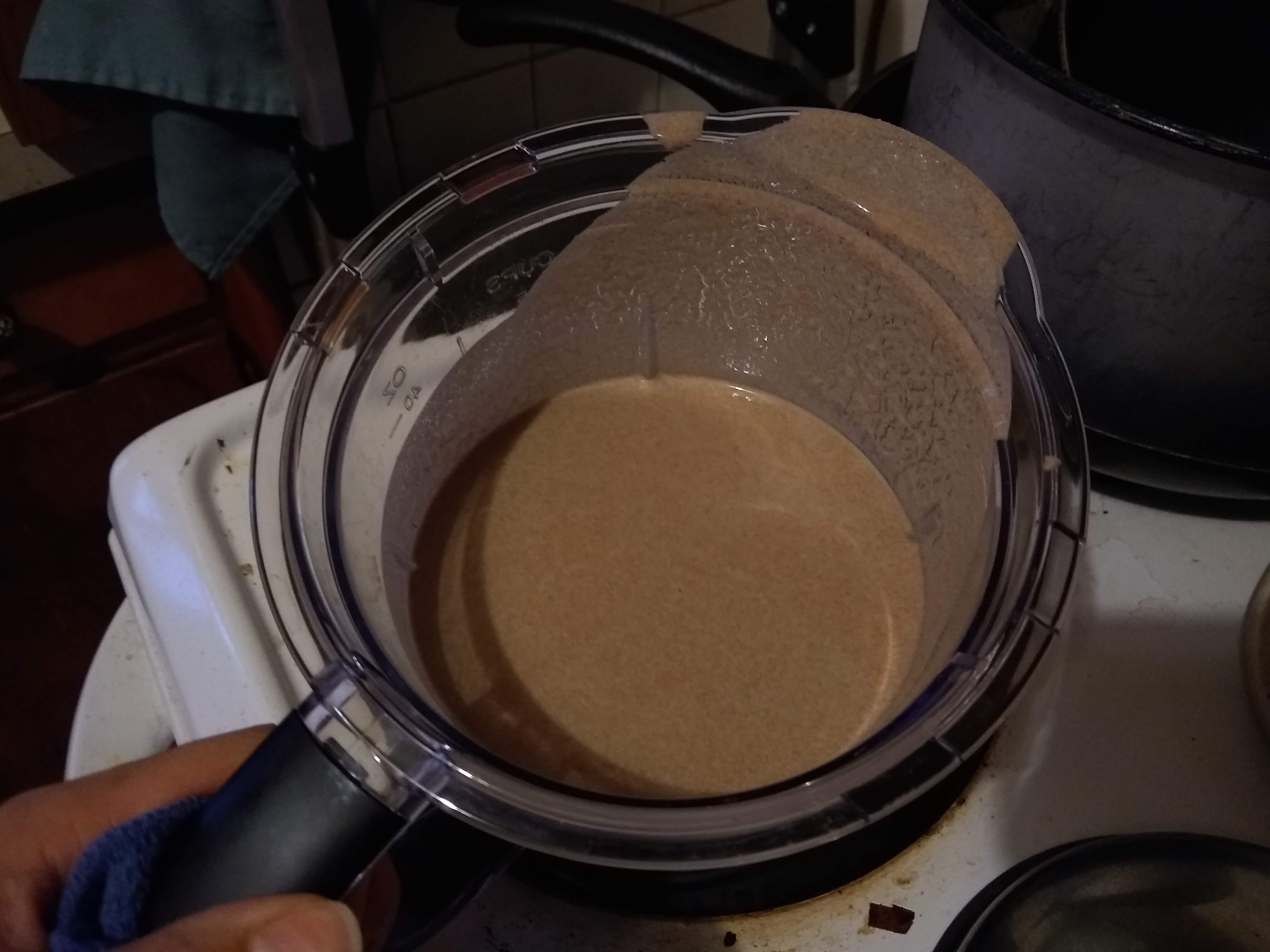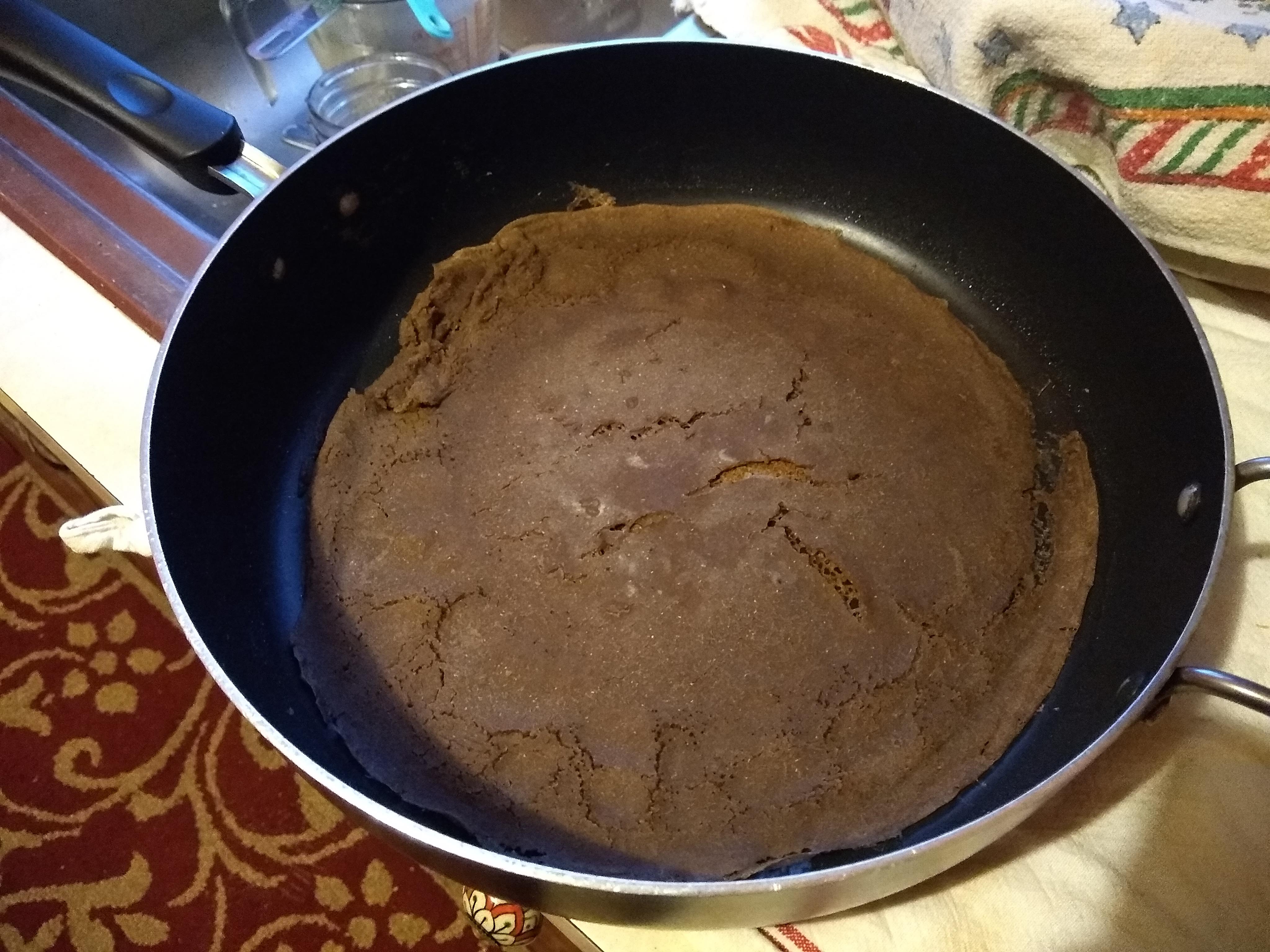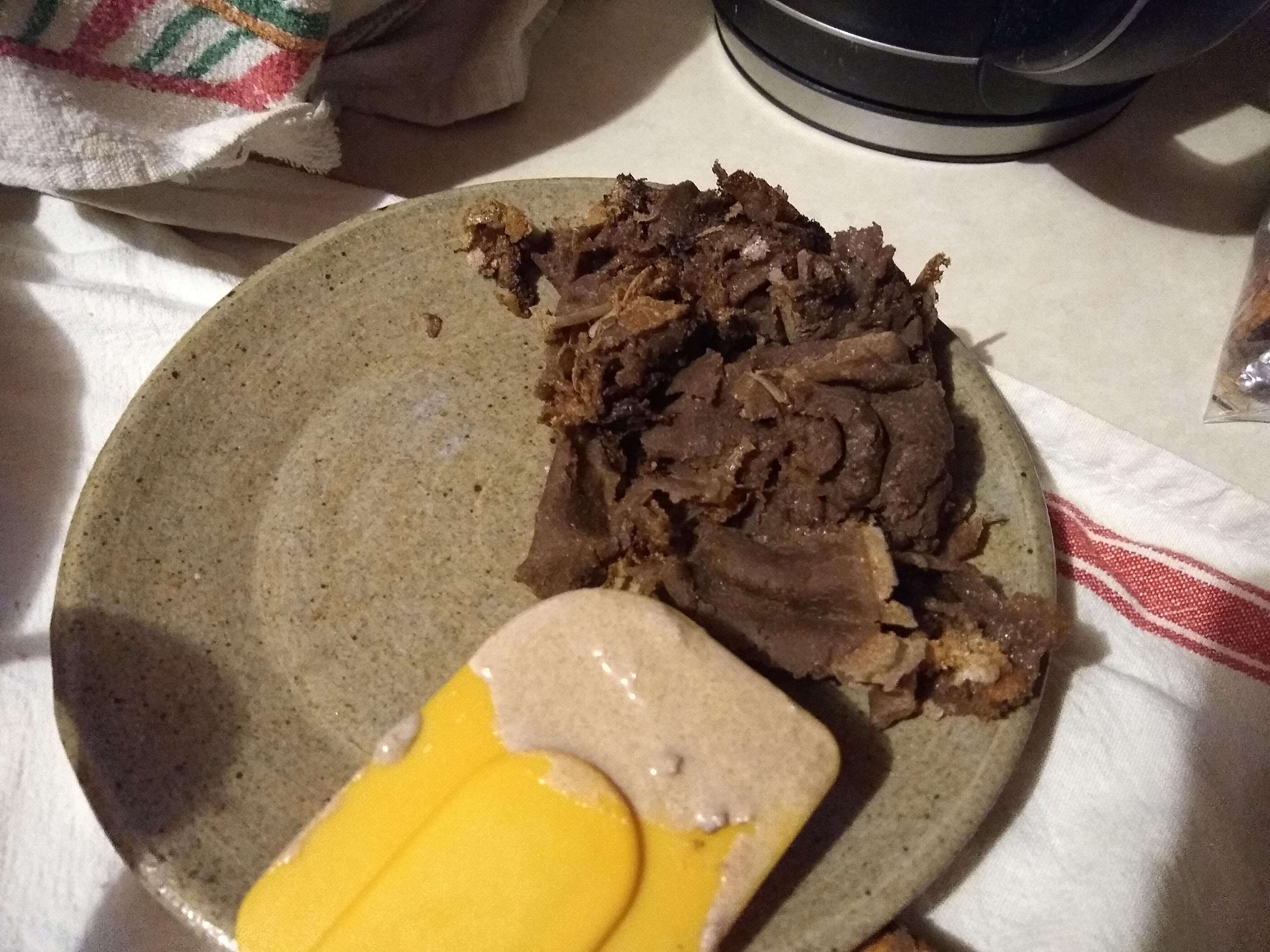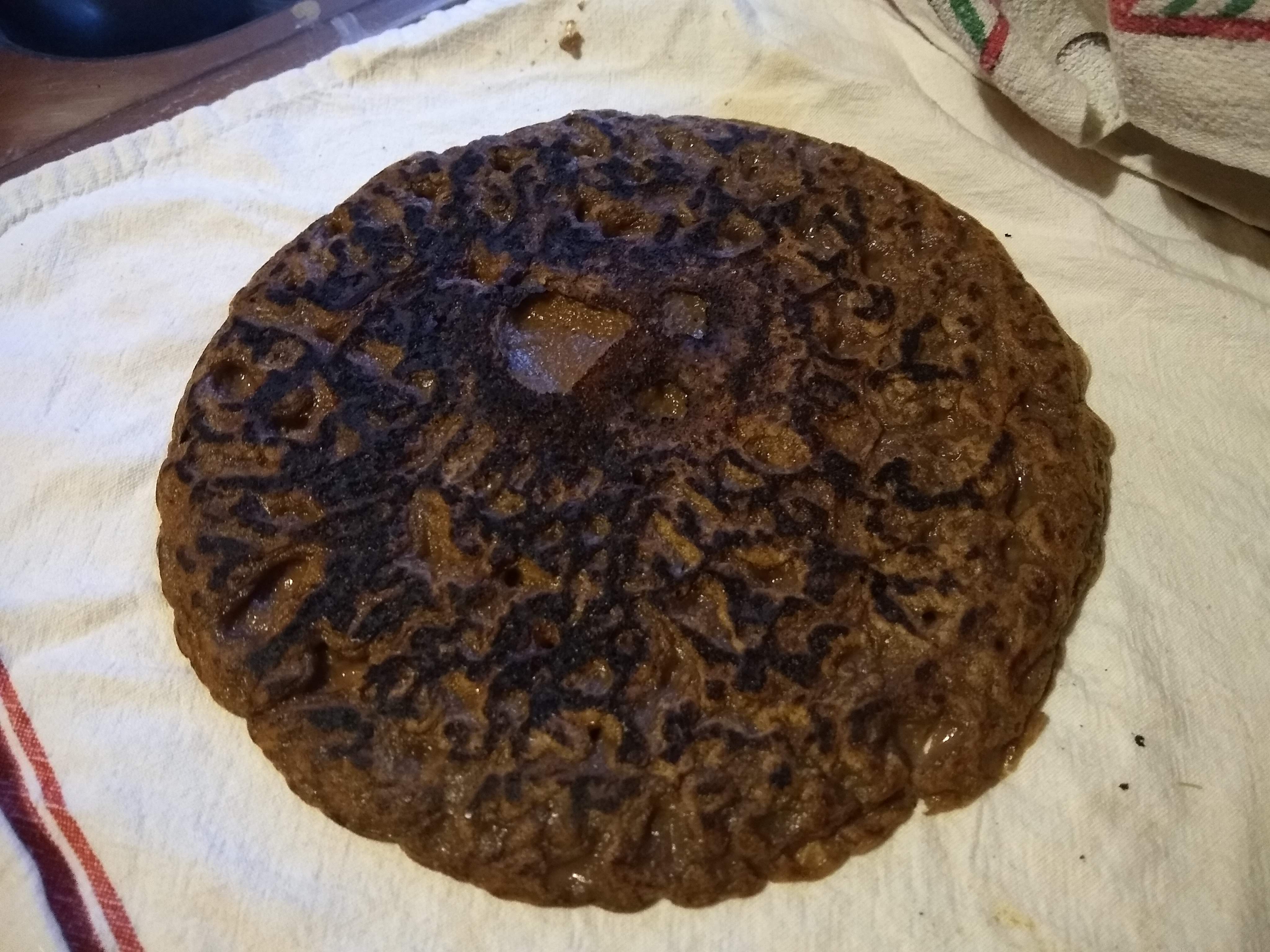No Half Measures
13 Mar 2020
By 2020 we had been eating Ethiopian food for a while, and I had made some forays into cooking it at home, thanks to the discovery of Ashama grocery in Saint Paul. The more intimidating step was making my own injera.
It’s one of those recipes that’s less of a recipe and more a vague list of steps. Ethiopian women who have made it for years simply know how much teff, barley flour and water to add, how long to let it sit, when it’s ready to cook. I have none of this experience. Assured by a coworker who had “watched his mother many times” that I could do it, I dove in.
I found a recipe that was fairly specific, and mixed up my batter. Then the directions are to let it sit and ferment for 3 days, until it’s bubbly. At the end of three days it had a bit of a funky smell, but no more off-putting than any other fermented food I’d attempted, especially since I’m unfamiliar. Then came the cooking.
First of all, I’m not using a pan meant for cooking injera. The more authentic cook surface is a flat hotplate. My pan was beginning to become not-nonstick, problem #1. It also had a high spot in the middle, probably from age and use, problem #2. I pushed on anyway.
The first one was rough, mildly. It came out of the pan in crispy pieces. The second was at least more whole, but would never turn into the graceful, spongy roll you see at restaurants. The third - finally! - came out of the pan nearly whole, but burnt on the underside because I didn’t know when to stop cooking it.
Normally I’d call this a good progression - starting with shreds, getting to a complete one? Sounds like some kind of success! But then I tasted them. That’s when I realized that I had either gotten a contaminant in the batter during fermentation, or I let it ferment too long. They were ridiculously sour, far more so than any restaurant-made injera I had ever eaten.
Chalk this one up as “try again” - maybe with a better pan? At least I can always buy 10-packs to go with the shiro that I make!







